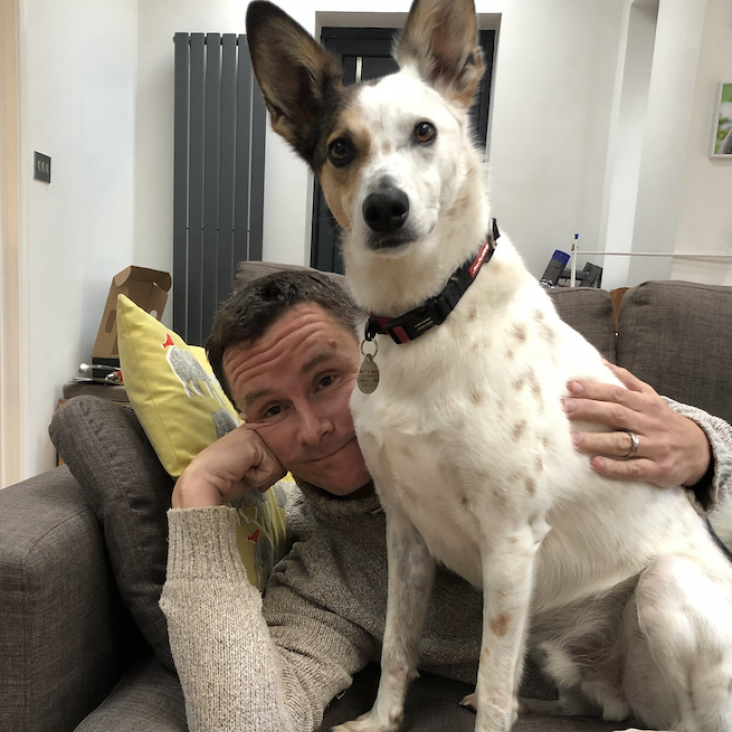LADUMA: looking at the distant universe with the MeerKAT array
Proceedings of Science (2016)
Abstract:
© Copyright owned by the author(s). The cosmic evolution of galaxies’ neutral atomic gas content is a major science driver for the Square Kilometre Array (SKA), as well as for its South African (MeerKAT) and Australian (ASKAP) precursors. Among the H I large survey programs (LSPs) planned for ASKAP and MeerKAT, the deepest and narrowest tier of the “wedding cake” will be defined by the combined L-band+UHF-band Looking At the Distant Universe with the MeerKAT Array (LADUMA) survey, which will probe H I in emission within a single “cosmic vuvuzela” that extends to z = 1.4, when the universe was only a third of its present age. Through a combination of individual and stacked detections (the latter relying on extensive multi-wavelength studies of the survey’s target field), LADUMA will study the redshift evolution of the baryonic Tully–Fisher relation and the cosmic H I density, the variation of the H I mass function with redshift and environment, and the connection between H I content and galaxies’ stellar properties (mass, age, etc.). The survey will also build a sample of OH megamaser detections that can be used to trace the cosmic merger history. This proceedings contribution provides a brief introduction to the survey, its scientific aims, and its technical implementation, deferring a more complete discussion for a future article after the implications of a recent review of MeerKAT LSP project plans are fully worked out.LADUMA: looking at the distant universe with the MeerKAT array
Proceedings of Science (2016)
Abstract:
The cosmic evolution of galaxies’ neutral atomic gas content is a major science driver for the Square Kilometre Array (SKA), as well as for its South African (MeerKAT) and Australian (ASKAP) precursors. Among the H I large survey programs (LSPs) planned for ASKAP and MeerKAT, the deepest and narrowest tier of the “wedding cake” will be defined by the combined L-band+UHF-band Looking At the Distant Universe with the MeerKAT Array (LADUMA) survey, which will probe H I in emission within a single “cosmic vuvuzela” that extends to z = 1.4, when the universe was only a third of its present age. Through a combination of individual and stacked detections (the latter relying on extensive multi-wavelength studies of the survey’s target field), LADUMA will study the redshift evolution of the baryonic Tully–Fisher relation and the cosmic H I density, the variation of the H I mass function with redshift and environment, and the connection between H I content and galaxies’ stellar properties (mass, age, etc.). The survey will also build a sample of OH megamaser detections that can be used to trace the cosmic merger history. This proceedings contribution provides a brief introduction to the survey, its scientific aims, and its technical implementation, deferring a more complete discussion for a future article after the implications of a recent review of MeerKAT LSP project plans are fully worked out.LOFAR 150-MHz observations of the Boötes field: catalogue and source counts
Monthly Notices of the Royal Astronomical Society Oxford University Press 430:3 (2016) 2385-2412
Abstract:
We present the first wide area (19 deg$^2$), deep ($\approx120-150$ {\mu}Jy beam$^{-1}$), high resolution ($5.6 \times 7.4$ arcsec) LOFAR High Band Antenna image of the Bo\"otes field made at 130-169 MHz. This image is at least an order of magnitude deeper and 3-5 times higher in angular resolution than previously achieved for this field at low frequencies. The observations and data reduction, which includes full direction-dependent calibration, are described here. We present a radio source catalogue containing 6276 sources detected over an area of $19$\,deg$^2$, with a peak flux density threshold of $5\sigma$. As the first thorough test of the facet calibration strategy, introduced by van Weeren et al., we investigate the flux and positional accuracy of the catalogue. We present differential source counts that reach an order of magnitude deeper in flux density than previously achieved at these low frequencies, and show flattening at 150 MHz flux densities below 10 mJy associated with the rise of the low flux density star-forming galaxies and radio-quiet AGN.Optimising commensality of radio continuum and spectral line observations in the era of the SKA
Monthly Notices of the Royal Astronomical Society Oxford University Press (2016) stw1164-stw1164
Abstract:
The substantial decrease in star formation density from z=1 to the present day is curious given the relatively constant neutral gas density over the same epoch. Future radio astronomy facilities, including the SKA and pathfinder telescopes, will provide pioneering measures of both the gas content of galaxies and star formation activity over cosmological timescales. Here we investigate the commensalities between neutral atomic gas (HI) and radio continuum observations, as well as the complementarity of the data products. We start with the proposed HI and continuum surveys to be undertaken with the SKA precursor telescope MeerKAT, and building on this, explore optimal combinations of survey area coverage and depth of proposed HI and continuum surveys to be undertaken with the SKA1-MID instrument. Intelligent adjustment of these observational parameters results in a tiered strategy that minimises observation time while maximising the value of the dataset, both for HI and continuum science goals. We also find great complementarity between the HI and continuum datasets, with the spectral line HI data providing redshift measurements for gas-rich, star-forming galaxies with stellar masses Mstellar~10^9 Msun to z~0.3, a factor of three lower in stellar mass than would be feasible to reach with large optical spectroscopic campaigns.Supernova rates from the SUDARE VST-Omegacam search II. Rates in a galaxy sample
Astronomy and Astrophysics EDP Sciences 598:February 2017 (2016) A50


